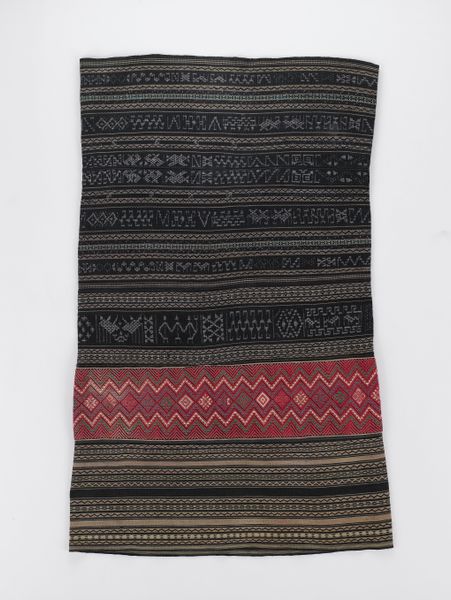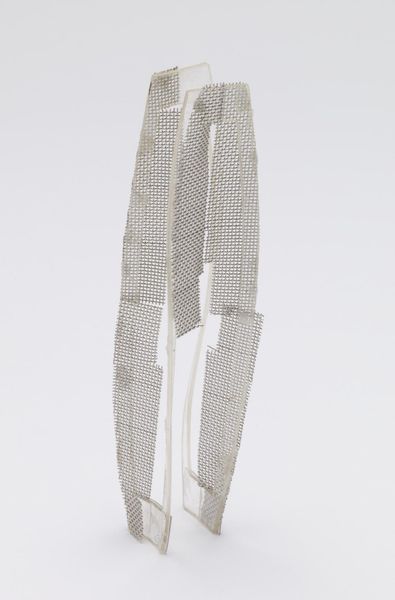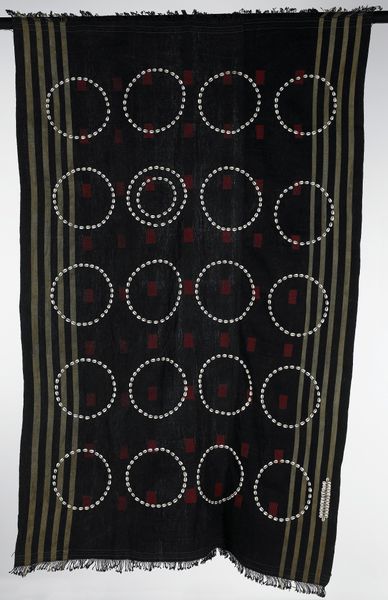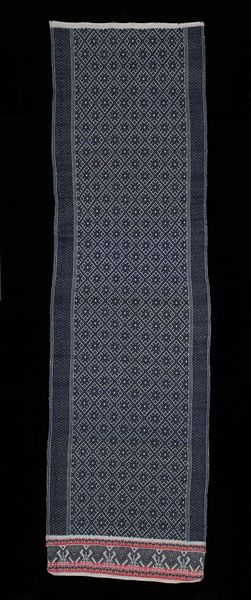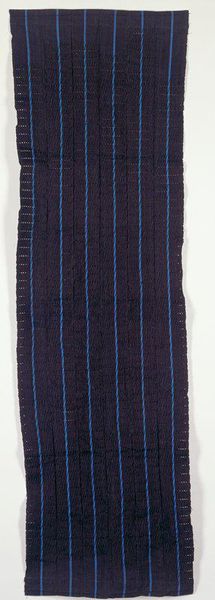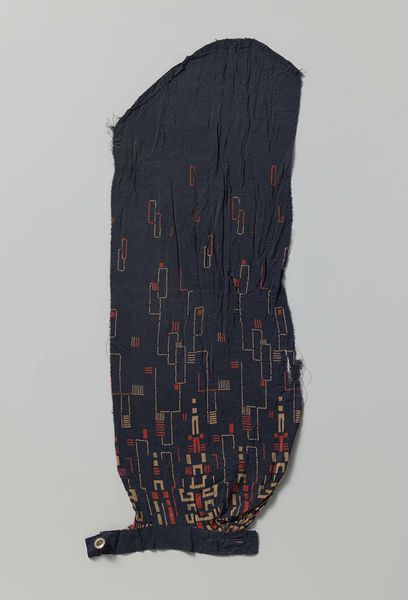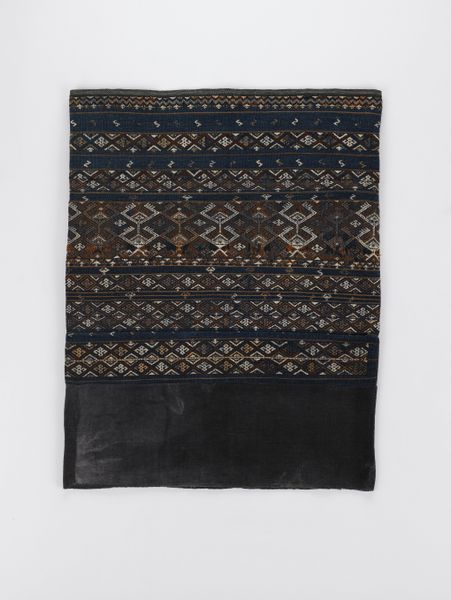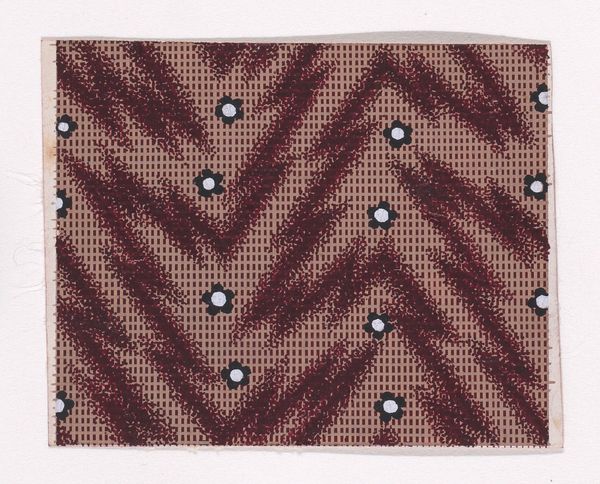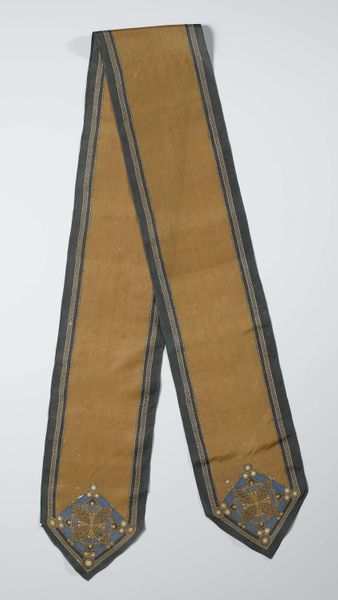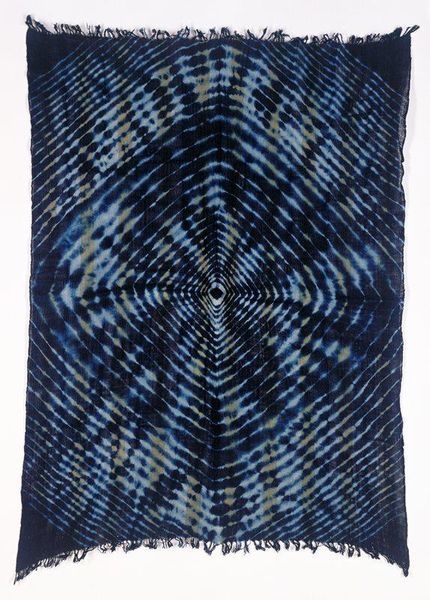
textile, cotton
#
fashion mockup
#
textile
#
pattern design
#
repetitive shape and pattern
#
minimal pattern
#
repetition of pattern
#
china
#
regular pattern
#
pattern repetition
#
cotton
#
imprinted textile
#
layered pattern
#
combined pattern
Dimensions: 36 1/2 x 2 in. (92.71 x 5.1 cm)
Copyright: Public Domain
Curator: I am immediately struck by the intricacy of this piece. The detail feels painstakingly crafted. Editor: Indeed. What we have here is a cotton textile referred to as a "Band," dating from the 19th to early 20th century, created by Gejia Miao artisans. It’s currently held here at the Minneapolis Institute of Art. Curator: The repetition of these diamond patterns... It's so controlled, and the use of blue as the ground color is compelling, giving the work an overall subtle tone, though when you approach closer you can identify hints of reds and greens as well. Editor: Well, if you consider the techniques involved, it reveals an interesting story. The indigo dye, most likely derived from local plants, points to a deep understanding of material processes. The time invested in creating something like this really begs questions about its original context. Curator: Precisely. Clothing, particularly within the Miao culture, often carries significant social meaning. Specific motifs can indicate status, region of origin, or even clan affiliation. Each piece is part of larger visual language spoken by a whole community. Editor: And given the repetitive shapes and layered patterns, the design suggests a sophisticated understanding of weaving, possibly created on a backstrap loom or a more complex drawloom that demanded skillful labor. It's hardly a "minimal pattern" as one might superficially classify it, but an intricately layered combination! Curator: I find it interesting to consider how such textiles, made with techniques that require knowledge passed down through generations, navigated changing social and economic conditions, especially with the advent of industrial production. These designs acted as visible representations of culture. Editor: Exactly. They represented the skill of Gejia communities that could very easily have become commodities removed from that place and those people. They offer insight into the labor, the expertise, and frankly the intelligence embedded in what we often hastily classify as “craft.” Curator: It makes you consider the ongoing challenges these communities faced to maintain autonomy and preserve cultural identity through their artistry, in an increasingly globalized world. Editor: Absolutely. By considering it as part of the global economy as a ‘textile’ instead of ‘fine art’, we shift our focus from an individual genius, to think more about collective identities and the forces that act upon them. Curator: It’s an elegant lesson. By looking closely, one can start to interpret the greater human narrative in the design, weaving not just cotton thread but societal fabric. Editor: Indeed, an object seemingly modest, offering a profound view into process, community, and a history made tangible through thread and dye.
Comments
No comments
Be the first to comment and join the conversation on the ultimate creative platform.


